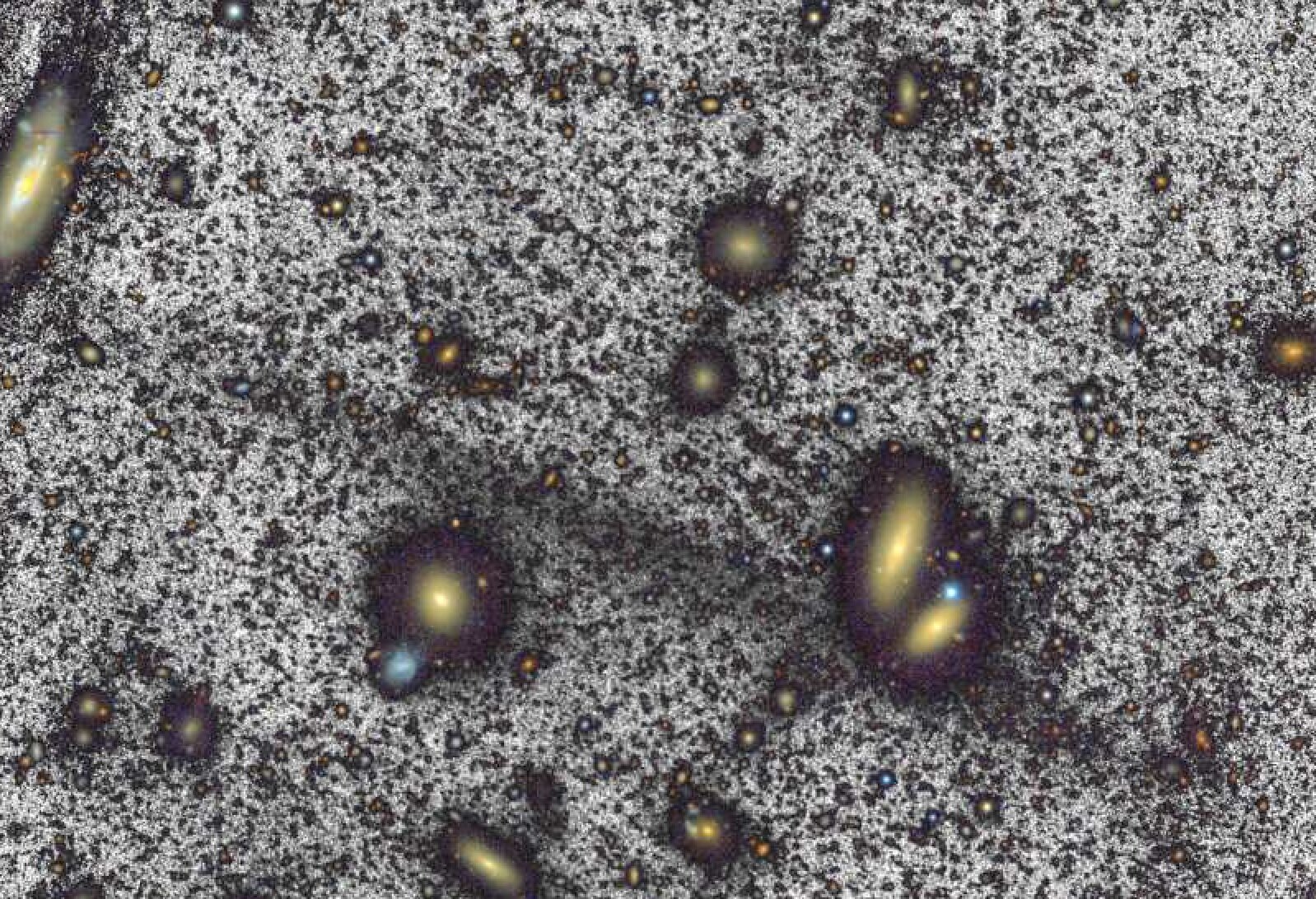To their surprise, an international team of researchers has discovered a giant and extremely faint stream of stars between galaxies. While streams are already known in our own galaxy and in nearby galaxies, this is the first time that a stream running between galaxies has been observed. It is the largest stream detected to date. The astronomers have published their findings in the journal Astronomy & Astrophysics.
The first observations were made with astronomer Michael Rich’s relatively small 70-centimeter telescope in California (United States of America). Next, the researchers focused the 4.2-meter William Herschel telescope (La Palma, Spain) on the area. After image processing, they saw an extremely faint stream more than 10 times the length of our Milky Way. The stream appears floating in the middle of the cluster environment, not associated with any galaxy in particular. The researchers have named it the Giant Coma Stream.
Sounds like a good setting for large-scale world building. After all the stream could have been formed by ejecta from a series of super nova and be rich in heavier elements and host to an unusually large number of technical civilizations. They might all come to a solid cosmological understanding very early due to a really good and unobstructed view of the nearby galaxies.
I was thinking of using the trails of stars the way Pacific Islanders spread out over the region, hopping from one to the next to reach the next galaxy over
Yeah me too. See my other comment on this thread about how this finding gives me shades of LeGuin
What if there’s a problem in the core galaxy and all the species who are capable of moving their suns are fleeing something, like a grey goo or highly advanced alien species.
And what would sun-movers be afraid of? Cthuloid horrors, at best.
Reminds me of the setting of The Stars are Legion. Not exactly the same, it’s a cluster of artificial planets in the middle of empty space, not a natural phenomenon. But it creates the same kind of “in this together” atmosphere form being isolated.
And yet the scale is still massive, ten times as long as the Milky Way is wide.
It also reminds me somewhat of Against a Dark Background, although in that case a single star system is completely isolated in the void. It’s all filled up and no one has FTL.🥲
I wonder how the unusual viewing conditions would impact cultural and scientific development. Even naked eye astronomers would quickly notice the difference between stars nearby in the stream and the more distant cluster galaxies. That makes me think of the comparative anthropology approach of U K LeGuin.
If there was some kind of galactic-scale emergency, one of the ways to get out would be to pull the sun with a gravity tug. This would drag all the planets along with it, and would get us away from something like a supernova provided we had enough warning.
What if this is the same thing? Or a giant inter-galactic colony armada, made of stars.
If this “stream” is not associated to any galaxy, shouldn’t it be its own galaxy by definition?
What makes a gigantic group of stars in the middle of a void a galaxy if not this, then?
Just from reading this article it seems that they are all moving between galaxies and not circulating
But the article says that they’re not associated to any galaxy. Do you know what else is traveling in between galaxies this way? Other galaxies.
Anyway. Not trying to contradict you. It’s just an interesting topic.
A black hole in the center for one.
Is that really so?
A galaxy must have a black hole in the center to be called a galaxy?
Edit: some definitions I’ve found online, including one at the Nasa website, mention gravity and quantity.
Must? No. Generally? Yes. All galaxies except for some dwarf galaxies that have been discovered have a black hole at the center.
https://www.astronomy.com/science/does-every-big-galaxy-have-a-central-black-hole/
As to why they’re not a dwarf galaxy either, they’re also not clustered. A cluster and a stream are different.
In what astronomical sense are clusters and streams different? Both are travelling through the void…
I’m not being confrontational. It’s just an interesting topic of discussion. And I understand that ultimately people have different criteria to name things. For example, a typhoon and a hurricane being pretty much the same thing except for location. Or a cosmonaut and an astronaut, etc.
The definition for ‘galaxy’ is independent of ‘being in space’. A galaxy is “a system of large numbers of stars, dust, and other interstellar matter bound together by gravity”. In much the same way that our solar system is bound by a gravitational center inside the sun, a galaxy is a collection of stars bound to a gravitational center in its core.
The stars in the interstellar stream are not bound by a single gravitational center. There might be multiple star systems inside the stream, but scale matters and a handful of stars do not constitute a galaxy. Note how this definition of ‘galaxy’ still does not include ‘moving through intergalactic space’, so that characteristic of the stars in this stream is ignored for this pedagogical exercise.
Thanks! It makes sense now.






